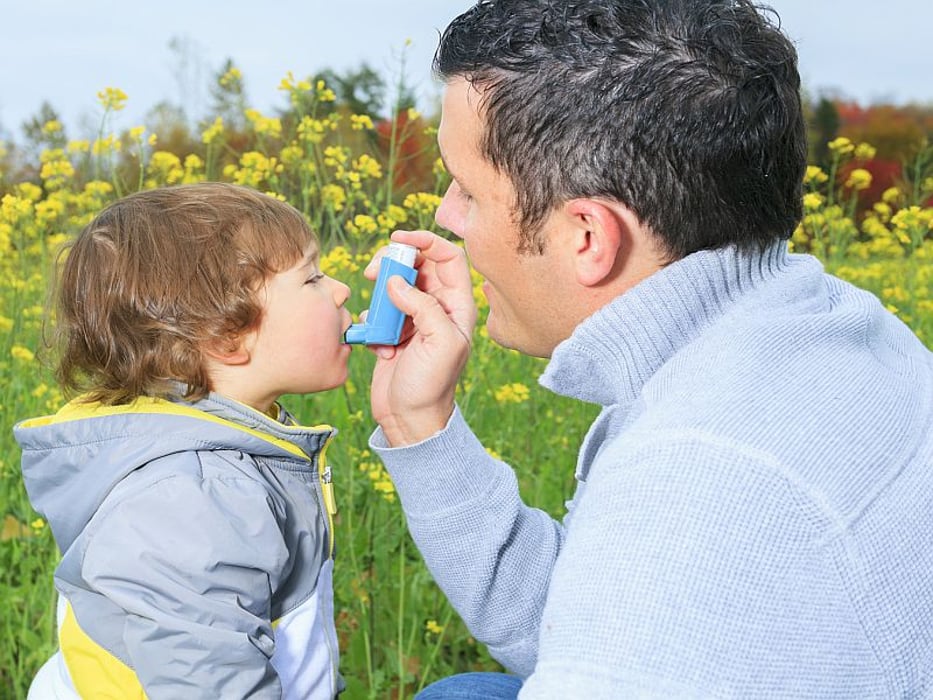Noninvasive Test Might Easily Spot Asthma in Preschoolers

MONDAY, Oct. 10, 2022 (HealthDay News) -- Hearing an infant wheeze for the first time can be scary for new parents, as wheezing is known to raise a child’s risk of developing asthma.
There’s been no easy way to predict a child will actually develop the respiratory condition without running invasive tests, but now a short questionnaire may do just that.
In a new study, CHART (Childhood Asthma Risk Tool) identified 91% of 3-year-olds who continued to have wheezing and other asthma symptoms by age 5, outperforming doctor diagnoses and the standard modified Asthma Predictive Index, which requires invasive tests.
CHART asks a series of questions about wheezing and coughing in the previous year. It’s meant to be answered by parents every six months after a child’s first birthday. The questionnaire also factors in emergency department visits, hospitalization for wheezing or asthma, and the use of medications for wheezing, cough and other symptoms that increase asthma risk.
“If they are in the high-risk category, it flags to the physician that the patient is likely to have continued symptoms and health-care use and, therefore, requires further evaluation for therapy,” said study author Dr. Padmaja Subbarao, associate chief of clinical research at The Hospital for Sick Children in Toronto.
For the study, researchers compared CHART’s ability to predict asthma risk to other available methods in more than 2,500 children. CHART was more accurate than doctors, who identified 62% of kids who were likely to still have symptoms at age 5, and the current test, which got it right 48.5% of the time.
The findings were published Oct. 6 in JAMA Network Open.
Experts offered mixed views about the potential value of this new asthma screening test in young kids.
“CHART has outstanding applicability in my opinion,” said Dr. Rebecca Fisk, a pediatrician at Lenox Hill Hospital in New York City. “This is a superb noninvasive tool to target the care and management of these children within a busy pediatric office or primary care clinic where quick identification of those at greatest risk is paramount to proper asthma therapy and treatment delivery and use of health care.”
This information can be easily gathered to quickly identify children at high risk and allows doctors to monitor kids at moderate to low risk, too, she said.
CHART may be used to predict and prevent emergency department visits and hospitalizations for asthma in kids if it ensures appropriate and early management and treatment of asthma, Fisk said.
But Dr. Shilpa Patel, medical director of the IMPACT DC Asthma Clinic at Children’s National in Washington, D.C., pointed out that available screening tools do work well even without invasive testing.
“There is room for CHART, but other tools do exist,” she said.
No matter what screening method is used, it’s important to diagnose asthma early and begin treatment, she said.
“Even though asthma is a chronic and common respiratory disease in kids, it is treatable and it doesn’t mean that kids will be on medication forever,” she said. Treatment is revisited every three to six months in the context of what is happening with your child, she explained.
Dr. Nathan Rabinovitch, an allergist and director of the pediatric care unit at National Jewish Health in Denver, said the real question is whether the child still be wheezing at age 8 and the new study doesn’t provide that information.
Kids who also have allergies are most likely to develop asthma, he said.
“If a child has outdoor or indoor allergies or [the inflammatory skin condition] eczema, this is a pretty strong predictor of asthma risk,” he noted.
There are ways lower the risk of allergic reactions, which can trigger an asthma attack in kids, such as making sure your child isn't exposed to secondhand smoke and taking steps to eliminate exposures to other known allergens such as dust mites, he said.
More information
American College of Allergy, Asthma & Immunology has more information on how to treat asthma in kids.
SOURCES: Padmaja Subbarao, MD, MSc, associate chief, clinical research, The Hospital for Sick Children, and co-lead, Precision Child Health, Toronto, Ontario, Canada; Rebecca Fisk, MD, pediatrician, Lenox Hill Hospital, New York City; Shilpa Patel, MD, MPH, medical director, IMPACT DC Asthma Clinic, Children’s National, Washington, D.C.; Nathan Rabinovitch, MD, MPH, allergist, director, pediatric care unit, National Jewish Health, Denver; JAMA Network Open, Oct. 6, 2022
Related Posts
Regularly Sleeping 10+ Hours Eases Transition to Kindergarten
MONDAY, July 11, 2022 (HealthDay News) -- Children who regularly obtain 10 or...
Un nuevo virus transmitido por las garrapatas se propaga por todo EE. UU.
JUEVES, 17 de marzo de 2022 (HealthDay News) -- Un virus potencialmente letal...
Los flotadores de cuello para las piscinas son un peligro para los bebés, advierte la FDA
MIÉRCOLES, 29 de junio de 2022 (HealthDay News) -- Los flotadores de cuello...
Los pacientes con cáncer de sangre se podrían beneficiar de un refuerzo de la vacuna contra la COVID: estudio
MIÉRCOLES, 15 de septiembre de 2021 (HealthDay News) -- Para los pacientes con...
